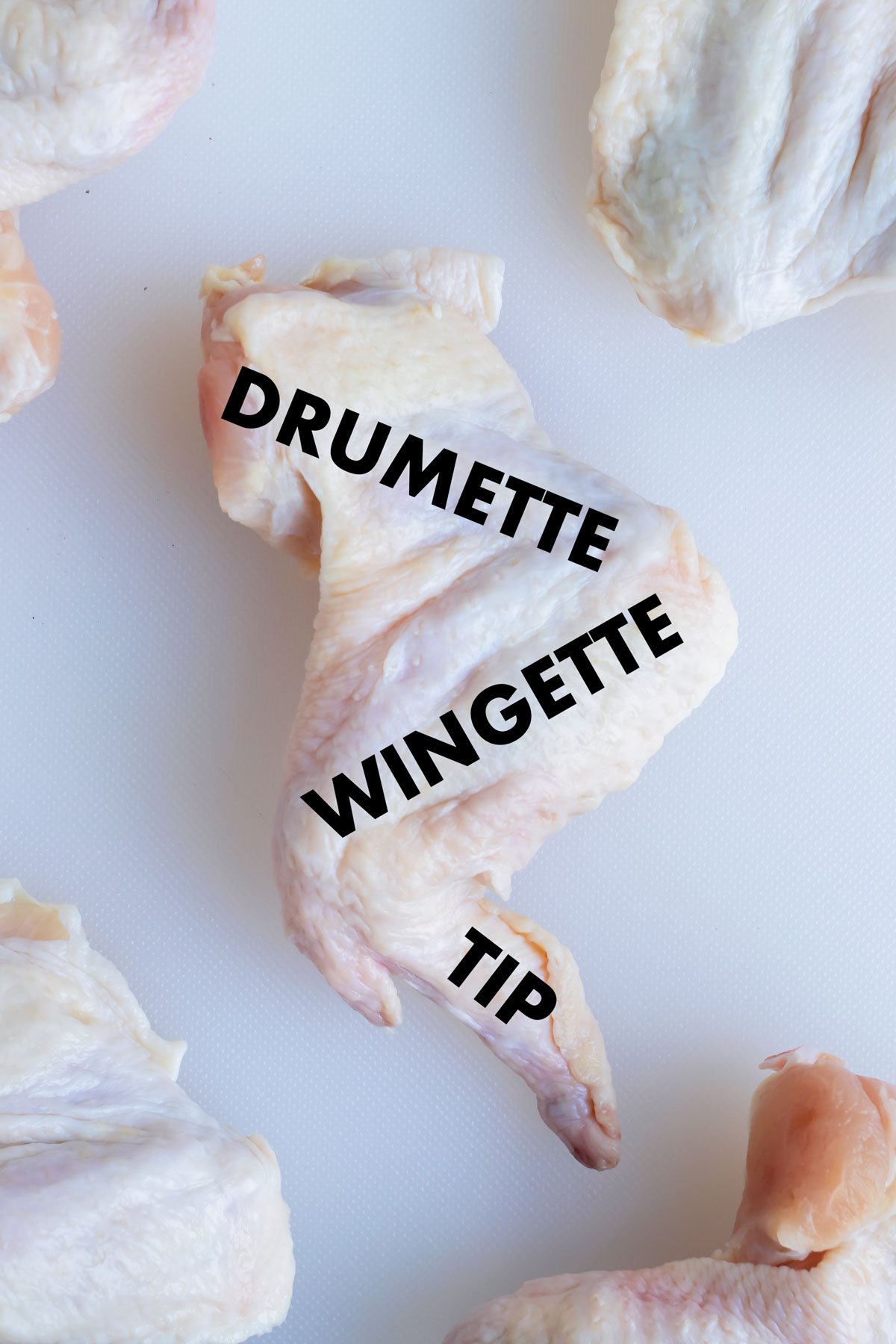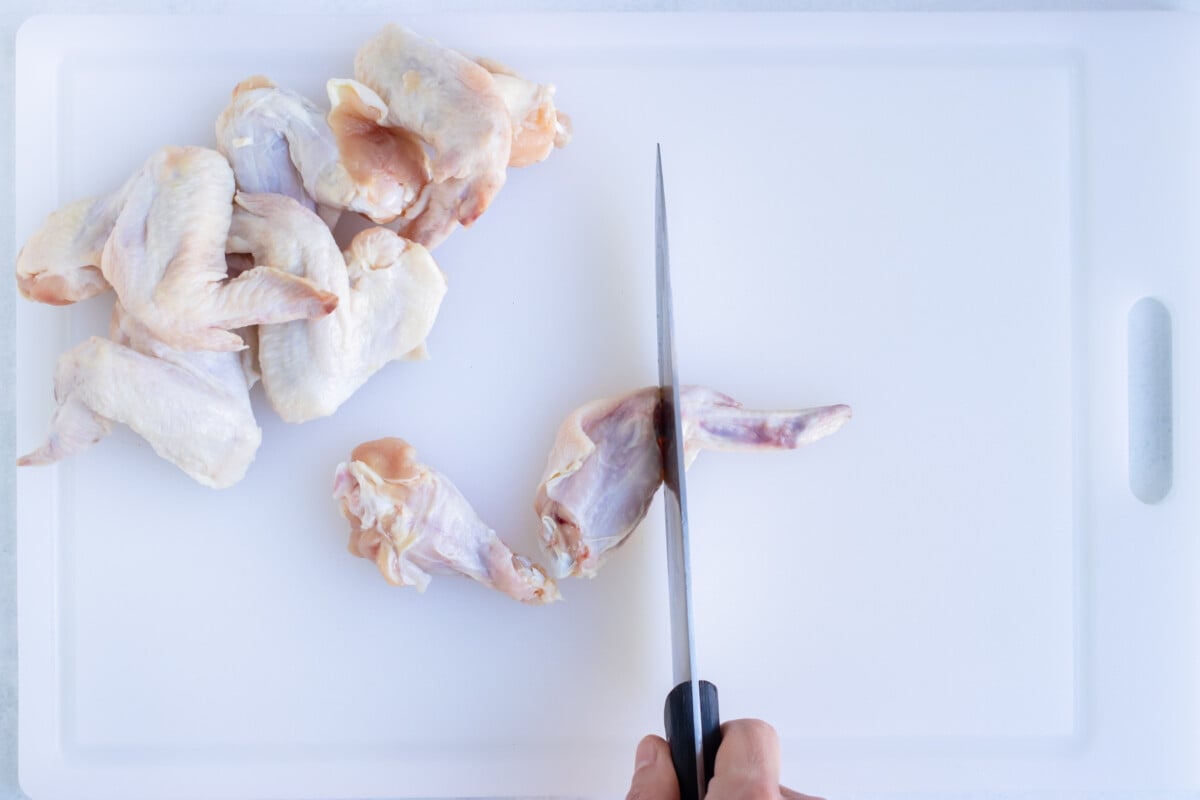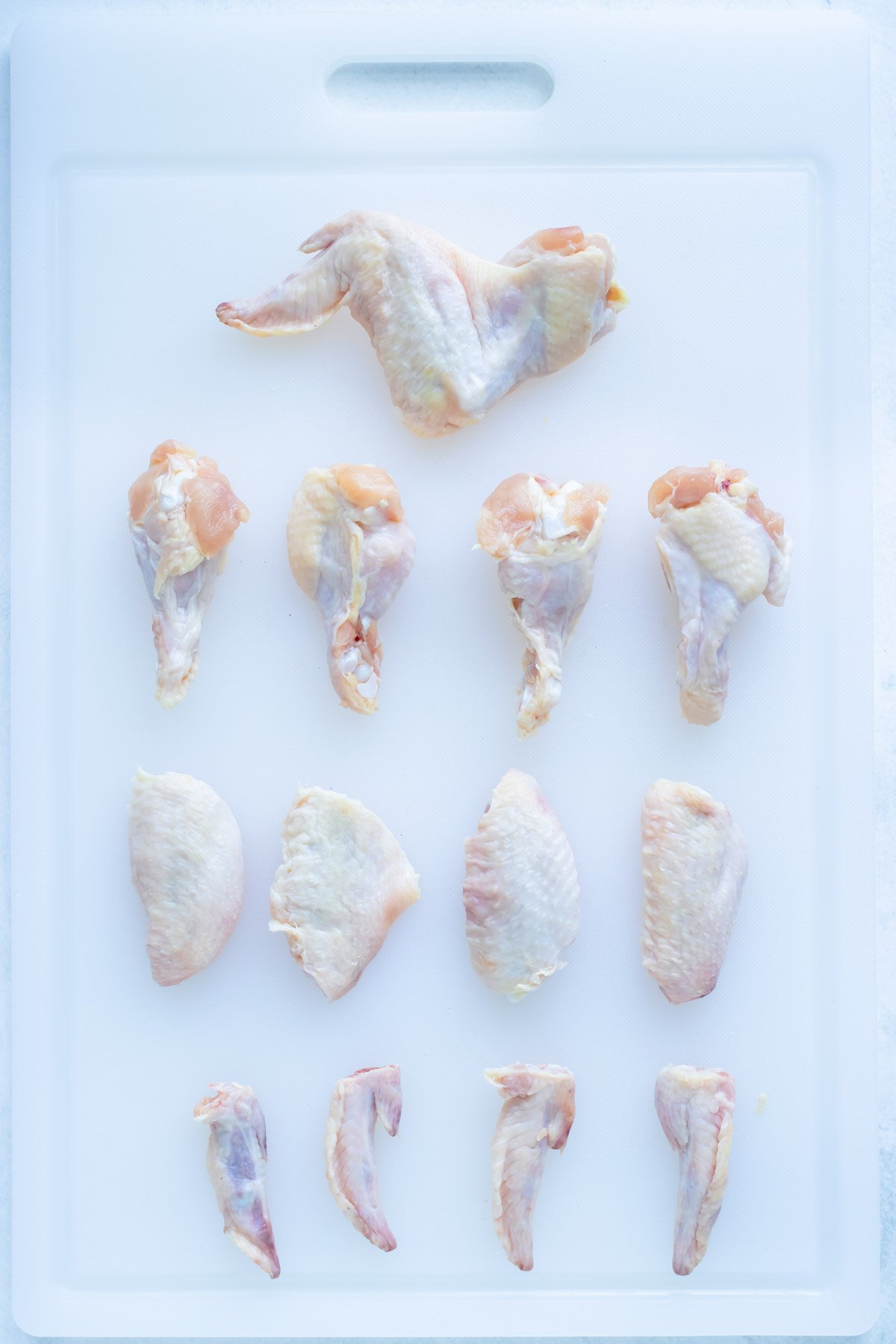Learn How to Cut Chicken Wings into separate portions, wingettes and drumettes, with only two simple cuts using this easy step-by-step guide! You can then use them in your favorite baked or fried wings recipes or store or freeze them for later. They’re perfect as a game day snack or a twist on chicken dinner.
When you have purchased whole chicken wings, you’ll need to cut them apart before using them in any recipes. The standard cutting process is quite simple. If you want to create a more visually interesting dish, you could also try French cutting or “Frenching” the wings before cooking them.

How to Cut Chicken Wings into Portions
With the Super Bowl just around the corner, sometimes it’s impossible to find fresh chicken wings at the local grocery store that have already been cut into separate wingettes and drumettes.
Instead, whole chicken wings may be your only option if you want to make that big platter of Baked Buffalo Chicken Wings or experiment with these Baked Thai Chicken Wings. << My favorite!
But fear not, my dear friend! It’s actually only a few simple steps to cut your own chicken wings into portions—so easy that all you need is a sharp knife and about 5 minutes to master this culinary skill.
But don’t rush into it too soon. Make sure to pay close attention to the details below, because knowing where to make a clean cut is the key to doing this the best way, quickly and efficiently!

Remove the Wing Tip
Next, locate the second ridge between the wingette and the tip portions.
Cut all of the way through this joint to separate the two pieces.

The joints have cartilage and are the easiest places to cut through. Avoid slicing through the bones as they are much harder to cut.
There are different ways to cook chicken wings. Baked chicken wings are a great healthy option but take a few tricks to get a super crispy skin. Deep-fried wings will give you the crispiest skin but with a ton of unhealthy oil. Air-fried chicken wings are the best solution with perfectly crispy skin and very minimal oil used.
Much like when cooking any other piece of chicken, wings are fully cooked through when their internal temperature reaches 165℉. Test with a meat thermometer in the thickest part of the wing.
- Plastic, please. Stear clear of wooden cutting boards when handling raw meat.
- Pay attention. These bones are quite thin and close to each other, so be careful where you’re cutting.
- Get creative. Top your wings with your favorite sauce for a tasty treat.
- Go all the way. Be sure to cook the chicken to 165℉ so no one gets sick.

How to Cut Whole Chicken Wings into Portions
FAQ
Should you split chicken wings before cooking?
Do you have to clip chicken wings?
Can you buy chicken wings already split?
Do you cut chicken wings apart before cooking?
When you have purchased whole chicken wings, you’ll need to cut them apart before using them in any recipes. The standard cutting process is quite simple. If you want to create a more visually interesting dish, you could also try French cutting or “Frenching” the wings before cooking them. Identify both joints.
How do you cut a chicken wing?
From there, it’s a simple two-step process. After you’ve gathered your supplies, follow this technique: Place the wing on your cutting board, and, using your fingertip, find the joint between the wing tip and the midsection. Place your knife in the center of that joint and cut through the skin and tendon to separate.
Do chicken wings need to be separated?
Chicken wings can be bought in two versions; either they come as a whole wing with all joints attached, or they might already be separated. Whole chicken wings can definitely be cooked as they come, and don’t necessarily require separating. However, many people still prefer to cut them, for a variety of reasons.
Can a whole chicken wing be cooked?
Whole chicken wings can definitely be cooked as they come, and don’t necessarily require separating. However, many people still prefer to cut them, for a variety of reasons. A whole chicken wing consists of 3 pieces: the drumette, the wingette and the wing tip.
